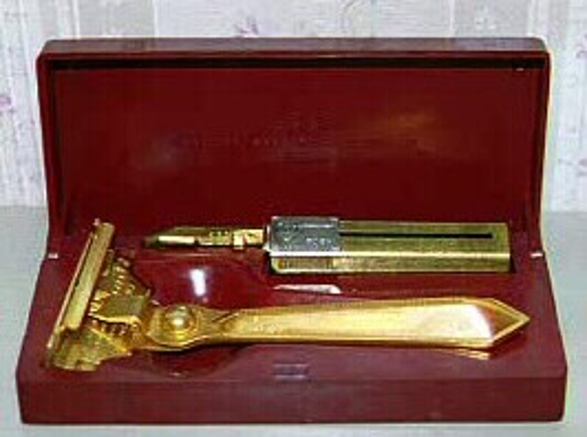Schick Razors: A Brief History
Schick razors have been around for quit some time, and if you are a hobbyist, it’s quite possible you have at least one Schick injector in your den. The history of Schick is an interesting one, and one I hope to explore a little in today’s post.
U.S. Army Lieutenant Colonel Jacob Schick retired from the military in 1910, but returned to service at the start of World War I.
During his break from military service, Colonel Schick staked mining claims in Alaska and British Columbia. One winter he had a severely sprained ankle that kept him in camp for several months, alone. During that time, he noticed that he had a difficult time shaving in the cold. He then came up with an idea for a dry razor that would allow him, and others, to shave without water or lather. He attempted to generate interest in this razor, but found no luck. He abandoned this idea to pursue other ideas.
In 1921 Colonel Schick invented the Magazine Repeating Razor (or Type A). This razor was heavily inspired by the army’s repeating riffle. The blades were stored in the handle and loaded when the head was flipped down and a blade inserted into the head of the razor. The head could then be flipped perpendicular to the body for a shave. The Type A went into production in 1926.


In 1927, Colonel Schick sold all of his interests in the Magazine Repeating Razor Company to the president of the American Chain and Cable Company so he could pursue his newly invented electric razor. During this time, the first injector razor was created, the Type D, or the Schick Injector Razor. This has a traditional T shape and an external injector, or key system.

The company was then acquired by Eversharp, Inc. in 1946 and renamed the company Schick Safety Razor Company. However, the American Chain and Cable Company continued to produce the razors for Schick until 1958 when Schick set up their own manufacturing facility in Connecticut.
Schick became the first company to sell stainless steel blades coated in Teflon and where also the first to successfully deposit a thin layer of chromium onto the blade, which made the blades more durable.
Dating Schick razors is not as easy as dating vintage Gillette razors. When the bakelite handles were introduced in 1936, the outward appearance of the razors changed very little until the mid-1950’s. A brief updating and restyling period lasted until the late 1960’s, then very little changed until the late 1990’s. Due to the long periods of little change, and a lack of serial numbers, it is more difficult to date Schick injectors. While specific dates are difficult to determine, Schick did use manufacturing codes since the 1960s. The plastic cases produced since the 1950’s have dates built into the manufacturing codes.
Here is a table that describes the various types of Schick razors, the packaging and head/handle design.
|
Type/Trade Name/Years Made |
Description Variations Packaging |
Head Handle Guard/Blade |
|
Type A
|
The first safety razor made my Col. Jacob Schick new company, The Magazine Repeating Razor Co. Packaging: Long narrow white cardboard box with included blade magazine and instructions |
Folding Head
Alloy tube handle with 8 grooves and vented cap
Smooth bar guard |
|
Type B
Magazine Repeating Razor
1927 to 1932
|
3 basic models:
B1: Silver plate handle, no cap. B2: Gold plate no cap. B3: Sterling silver, several patterns, with cap.
Packaging: B1: narrow white box and leather sheath.
|
Folding Head
Square handle, finely grooved, gold or silver plate. No cap.
Some sterling silver with cap.
Smooth Bar or Closed Comb guard
|
|
Type C
The Simplified Schick Automatic Razor
1933 - 1941
|
Simplified loading mechanism did away with the difficult spring plug.
Came in 3 models:
C1: full open comb guard, C2: closed comb guard, and C3: bar guard (the rarest version)
Package: narrow white box with blue trim.
|
Folding Head.
Square, gold plated, filigree design, usually with cap.
Open Comb, Closed comb, or Smooth Bar Guard
|
|
Type D
Schick Injector Razor
1935 |
The first Schick Injector Razor.
Used an external blade injector.
Head opened to clean the blade.
Case: was a maroon bakelite box with a "wax seal" type logo on top.
|
Traditional Head. Flat square spring, moveable with handle.
Scissors type split metal gold plated handle.
Bar Guard with irregular striations.
|
|
Type E
Schick Injector Razor Deluxe Model
1935 to 1945 |
First Schick with amber bakelite handle. Head form that was used up to 1954. Variations based on handle & head finish.
E1: Flat Head spring with tabs
Spring moved left to open the blade clamp for washing.
Package: a black bakelite box (like D), or gold and red cardboard box.
E2 to E5: spring fixed in place at sides. E3: bar guard gets parallel grooving E4: Side flaps removed from spring E5: Rarely seen with black handle.
Packaging: Domed leather over metal clam shell in: brown (common) with 20-year guarantee, blue (scarce) likely WW2 Navy issue or red (rarest) always WW2 armed forces.
Various cardboard boxes (blue is common)
Bakelite case in black or brown (Canada)
|
Traditional Head. Round spring, side flaps, (early: flat with tabs). Right side spring restraint or restraints on both sides.
Carmel Bakelite Handle.
Bar Guard with irregular striations.
|
|
Type F
The New Improved Schick Injector Razor
1940 to 1941
|
Cast alloy handle also forms guard.
Spring and cap integral, of brass.
Package: unique black folding plastic art deco case with blade vault.
|
Copper and Alloy Head, Integral spring. Cast alloy handle.
Bar Guard with irregular striations.
|
|
Type G
Eversharp-Schick Injector Razor
1946 to 1955 |
Eversharp Shick Injector Razors:
G1: molded plastic handle (seam)
|
Traditional Head. Round spring, center fixed, no flaps.
various finishes
Bar Guard with parallel grooves.
|
|
Type H
Fashion Razor
1947 to 1953 |
H1: Ladies Fashion Razor White plastic handle and gold metal cap
H2: The Deb Fashion Razor
Turquoise or red plastic handle pulls off and becomes storage cap.
Packaging: Cubic paper boxes, gold printing.
|
Compact and flat travel style with cap.
Integral spring Molded plastic plug
Bar Guard with parallel grooves.
|
|
Type I
Schick Injector Razor (and Hydro-Magic)
1955 to 1964 |
The first major change in 20 years.
I1: Short square ribbed ivory handle and gold head, or rarely black handle and silver (chrome) head
I2: Hydro-Magic: Short square ribbed black handle, Hydro-Magic lever and gold head, or rarely, silver (chrome) head. The Hydro-Magic lever allowed loosening of
|
Triangular, flat spring |
|
Type J
Schick Injector Razor
1958 to 1964 |
Like I model with long round handle. |
Triangular, integral spring |
|
Type K
Lady Eversharp Beauty Razor
1962 to 1968 |
K1: Handle tipped with metal ferrule, |
Triangular, flat spring |
|
Type L
Schick Injector Razor
1965 to1980 |
K1: Handle tipped with metal ferrule, Head in silver or gold. |
Triangular, flat spring
|
|
Type M
Schick Dial Injector Razor Adjustable by Schick Schick Injector Adjustable Razor
1965 to 1972 |
Like L models but with blade adjustment knob
|
Triangular, integral spring, |
|
Type N
Schick Injector Razor
1980 to 1998 |
N1: Handle with chrome accent strip |
T shaped head, flat narrow spring. Black plastic various |
|
Type O
Schick Injector Razor
1999 to present |
Stainless Steel handle integrated in head. |
Modern triangular head integrated to handle. Stainless steel and black rubber handle. |
Table was found at razors.click - Schick Identification
Do you have a Schick injector in your collection? If so, which model do you have? Did the table help you identify the model you have? Let us know in the comments below.
JBT


5 comments
I inherited the SCHICK Injector razor. The case is hard , brown with hinged lid The back has a Twenty Year Guarantee (1940) in gold. Says magazine repeating Razor Company of Canada. Niagara Falls, Ontario. The interior is a red cardboard.
Does anyone know the age of it
I was the customer service manager when Schlick was in the Empire State Building and later in Milford CT. I greatly liked working for them. Only left because I wanted to commute to NYC
I was a Schick District Mgr/Sales Rep in the SE USA, 1964-1968. About 1966 Schick introduced the first Stainless Steel Double Edged Razor & Blade..with the Krona Edge. Wilkinson Blades had entered the US from UK. Schick scooped Gillette’s double edged blade introduction nationally. I also sold, briefly a razor that had a continuous stainless steel ribbon blade that could be dialed to change the shaving edge. I have one of these in my possession. Thanks for the postings.
I was on the schick testing panel from sometime in the early eighties until it was discontinued probably 20 years
Do you know anything about Schick contests? We have pictures of a family here in Colorado that won $25,000 many years ago and wanted to know if it was for writing a jingle. Thank you for any help